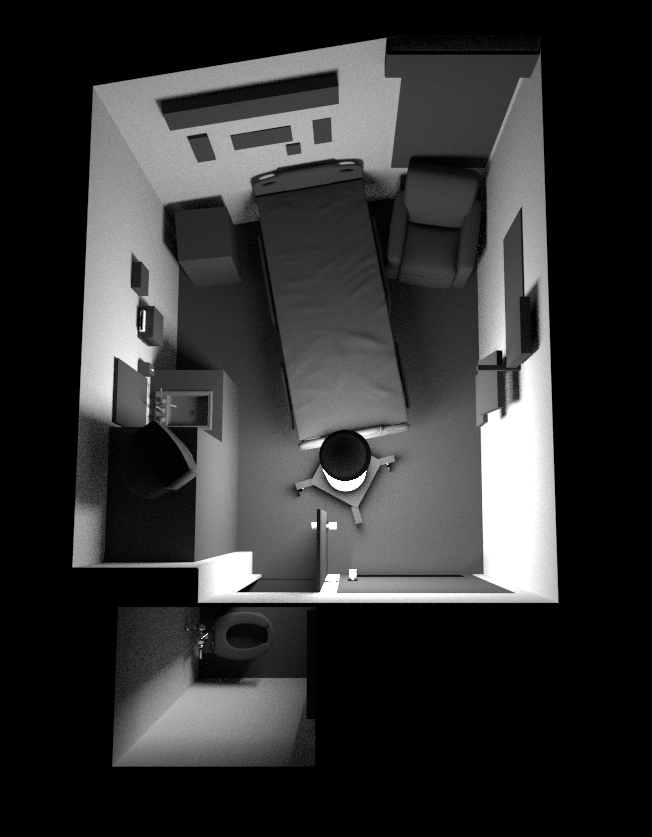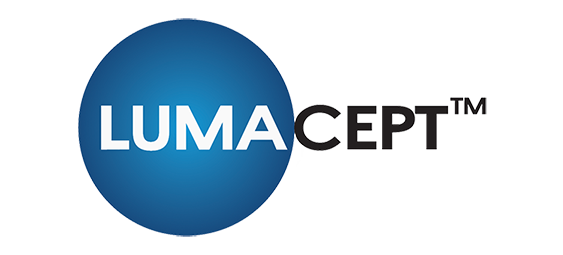A study demonstrating the effectiveness of LumaSim for predicting UV irradiance in healthcare facilities was presented at the APIC 2014 Conference in Anaheim, CA.
The study was conducted in two locations. An initial proof-of-concept study was performed at the University of North Carolina in the same rooms used in previous studies of Lumacept. UV-C irradiance measurements were taken in 10 locations throughout the room. Measurements were taken both with and without the presence of Lumacept-painted walls. A 3D model of the room was constructed and LumaSim was used to predict the intensity of UV-C in these locations. Good agreement was found between the measured and predicted values. Below is a rendering from the 3D model for the room containing UV-reflective walls.

A second, more detailed, study was then conducted at Sanford South University Hospital in Fargo, ND. This study included measurements of 20 high-touch surfaces. In addition, 5 different device locations were studied and the UV-reflectivity of the walls was adjusted by painting the room with various grades of Lumacept. Control measurements were also taken in the room using traditional non-UV-reflective paint. The image below shows the locations of several of these target surfaces (red) and the locations of the device (blue):

The results were as follows:
- Over a very wide range of UV intensities, LumaSim demonstrated excellent predictive capabilities. For more details, download the APIC Presentation.
- The effect of device location is pronounced. The total time necessary to achieve a targeted dose depended heavily on the location of the surface relative to the location of the device. This highlights the need to select device locations carefully.
- The effect of Lumacept was to significantly increase the overall level of UV intensity, especially for surfaces not in direct line of sight of the device. Further, Lumacept greatly reduced the amount of time necessary to achieve a target dose on all surfaces.
To learn more about LumaSim contact us.
